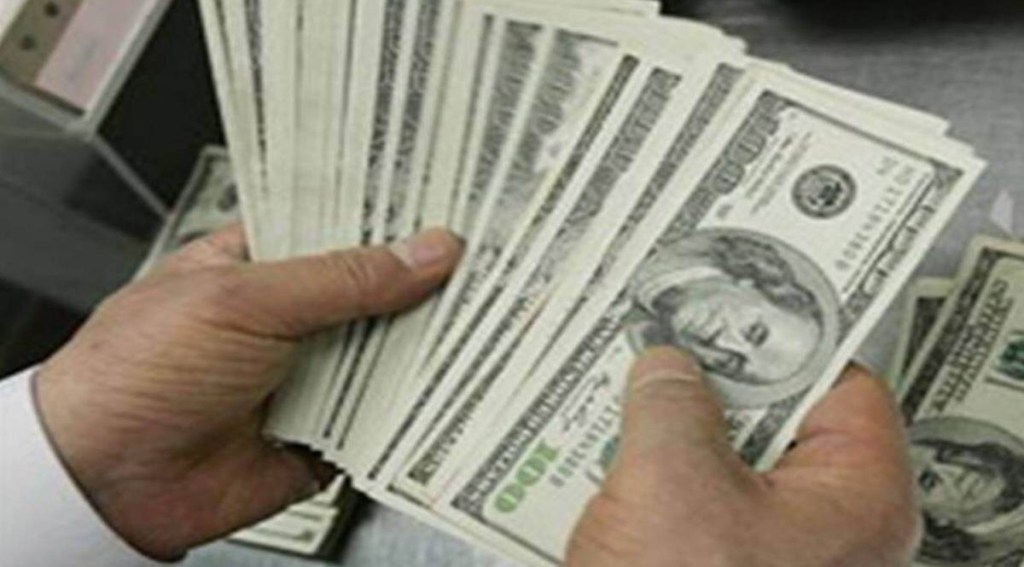By Indranil Sen Gupta
We model escalation in geo-political risks as a spike in oil prices to, say, $150/bbl for two months. This raises our average annual oil price forecast by about $10/bbl to $88/bbl. This, in turn, results in $11 billion or 0.3%-o-GDP widening of the current account deficit.
We also posit a $20 billion outflow ($10 billion FYTD) by foreign institutional investors (FPIs) due to extreme risk aversion. We continue to point out that RBI’s high FX reserves guard against 1970s/1990-type BoP crises after oil shocks. We continue to expect the rupee to trade in a range of 73-76.50 to the dollar.

We estimate RBI’s adequate FX reserves, at $600 billion against the current $680+ billion (including forwards). Our assumptions of higher oil prices and FPI outflows above imply a drawdown of $30 billion. This will still leave RBI with a large $50 billion war chest to fend off any speculative attack.
We believe that RBI will try to replenish FX reserves sold by buying FX when the dollar weakens and allowing the rupee to reach 75-76 to the dollar when it hardens. Second, it can also hike deposit rates on Foreign Currency Non-Resident (Banks) deposit scheme. Finally, the government can easily raise $15-20 billion by issuing infra bonds issued by the National Bank for Financing Infrastructure and Development (NABFID), a wholly-owned subsidiary.
We expect the government to cut oil taxes to limit the impact of higher oil prices on pump prices/retail inflation. Note a $10/bbl hike in oil prices raises inflation by 40-50 bps. As it is, consumption demand remains weak. If the government wants to contain pump prices at current levels, our oil analysts estimate that it will have to cut oil taxes by Rs 830 billion ($11 billion, or 0.3% of GDP). This will widen the already high fiscal deficit an additional 0.3% of GDP.
Rising FX outflows will drain out surplus liquidity and create room for RBI to buy government bonds through OMO. The higher fiscal deficit will likely push up net borrowing by $11 billion. At the same time, the $30 billion FX outflow will enable RBI to step up OMO to buy the larger issuance of bonds and drain out surplus liquidity.
RBI has to inject a certain amount of liquidity—called reserve money in the argot—to grease the wheels of the economy. This can be generated by either buying government paper or foreign exchange. If there are FX outflows, RBI can buy more of government paper and vice versa.
Geopolitical risks will result in RBI FX intervention sales of US$30bn instead of a purchase of US$1 in Figure 10. This will allow the RBI to OMO up to US$49bn from US$19bn earlier, although it will likely prefer to cut down surplus liquidity as well.
The higher fiscal deficit will likely raise the excess supply of government bonds to $84 billion from $74 billion. As this should be funded by larger RBI OMO, we retain our FY23 10-year bond yield forecast at 7.5%.
This assumes that the RBI MPC hikes policy rates by 100 bp in FY23 with the Fed set to raise 150 bp by November. While higher oil prices will present an inflationary threat to our 4.7% average FY23 bp CPI inflation forecast, we expect the government to cut oil taxes to contain inflation. As noted above, a reduction in liquidity due to FX outflows will allow RBI to fund the higher fiscal deficit with a step up in OMO.
The author is Economist and head of research, CLSA India
Edited excerpts from CLSA’s India
Economics report dated dated February 22

